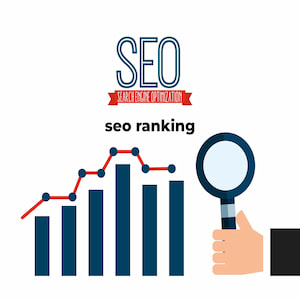Programmatic SEO Strategies: The Ultimate Guide to Scaling Organic Traffic

What Is Programmatic SEO?
Programmatic SEO is a scalable, data-driven approach to content creation and optimization. Instead of manually publishing individual pages, programmatic SEO uses automation and dynamic templates to generate hundreds or thousands of keyword-targeted pages—all optimized for search engines and user intent.
It’s especially useful for websites that need to target long-tail queries, location-specific searches, or product-specific content at scale.
Why You Should Use Programmatic SEO
Programmatic SEO isn’t just for large enterprises—any site looking to scale traffic, save time, and target niche audiences can benefit. Here’s what makes it powerful:
1. Massive Scalability
Quickly generate thousands of optimized pages targeting diverse keywords, locations, or product variants.
2. Increased Efficiency
Automate repetitive SEO tasks like content publishing, internal linking, and metadata creation.
3. Hyper-Targeted Traffic
Capture long-tail keyword searches with laser-focused, intent-driven content.
4. Cost-Effective Growth
Minimize the need for large content teams by using templates and scripts.
5. Smarter Decisions with Data
Leverage keyword data and analytics to continuously optimize and refine your content strategy.
Top Programmatic SEO Strategies for 2025
1. Use Data to Find Keyword Opportunities
-
Use tools like Google Keyword Planner, SEMrush, and Ahrefs
-
Focus on high-intent, low-competition long-tail keywords
-
Identify content gaps in your niche
2. Build Reusable Content Templates
-
Create dynamic templates for product pages, FAQs, service locations, or blog lists
-
Insert variables such as city names, product types, or user questions
-
Example: “Best [Service] Providers in [City]”
3. Automate Page Generation
-
Use Python, JavaScript, or tools like Sheetsu to bulk-generate content
-
Integrate live APIs to pull in updated information (like pricing, reviews, or availability)
-
Example: Generate “Top Hotels in [City]” using hotel listing data
4. Optimize Every Page for SEO
-
Include your primary and secondary keywords in:
-
Page titles
-
Meta descriptions
-
H1–H3 headings
-
Image alt text and file names
-
-
Add schema markup for local businesses, products, or articles
-
Use internal links between related programmatic pages
5. Improve UX and Avoid Low-Quality Content
-
Avoid thin or repetitive content by adding valuable, unique details
-
Ensure fast page load speeds and mobile responsiveness
-
Include helpful elements like maps, reviews, FAQs, or comparison charts
6. Target Local SEO with Location Pages
-
Build city-based landing pages: “Best Plumber in [City]” or “Law Firm in [Zip Code]”
-
Embed Google Maps, local contact info, and customer testimonials
7. Build Keyword Clusters
-
Group related long-tail keywords into silos
-
Create parent and child pages (e.g., “Home Workouts” → “HIIT Workouts,” “Yoga for Beginners”)
8. Monitor, Test, and Optimize
-
Use Google Analytics, Search Console, and A/B testing
-
Monitor rankings, click-through rates, and bounce rates
-
Update templates based on user engagement and SEO performance
Real-World Examples of Programmatic SEO
1. E-commerce Websites
Auto-generate product and category pages for thousands of SKUs with SEO-rich content.
2. Travel Aggregators
Create destination pages like “Best Hotels in [City]” using booking APIs.
3. Local Service Providers
Build pages for every city or zip code where services are offered.
4. News Aggregators or Review Sites
Use templates to create topic-based or keyword-driven content feeds.
Challenges in Programmatic SEO (and How to Fix Them)
| Challenge | Solution |
|---|---|
| Duplicate Content | Use canonical tags, unique descriptions, and structured data |
| Thin Content | Add FAQs, comparison tables, and user-generated content |
| Technical Glitches | Test templates thoroughly across browsers and devices |
| Search Engine Penalties | Follow Google’s quality guidelines, avoid spammy automation |
Recommended Tools for Programmatic SEO
-
Google Sheets – Build your templates and manage bulk data
-
Python – Automate content generation and file creation
-
Sheetsu / Airtable / Make.com – Turn spreadsheets into dynamic APIs
-
WordPress + WP All Import – Bulk upload and publish programmatic pages
-
SEMrush / Ahrefs – Track keywords, backlinks, and content gaps
-
ChatGPT / Jasper – Generate human-like text dynamically
Final Thoughts: Should You Invest in Programmatic SEO?
Absolutely. If you’re looking to grow traffic exponentially and create a solid long-term SEO foundation, programmatic SEO is a must-have strategy. It’s ideal for:
-
E-commerce brands
-
Multi-location businesses
-
SaaS companies
-
Publishers and content networks
You don’t need to start big. Start with 10–20 pages, test results, and scale once you’ve found the right formula.
Next Steps: How to Get Started
-
Define your keyword targets
-
Build your first dynamic content template
-
Automate page creation with your preferred toolset
-
Monitor performance
-
Scale based on success metrics
What is a good CTR?What is roas in marketing?
Have You Tried Programmatic SEO?
Let us know your experience in the comments.
Have questions or need help setting it up? Contact our team—we’ll be happy to help you scale smarter with automation.

